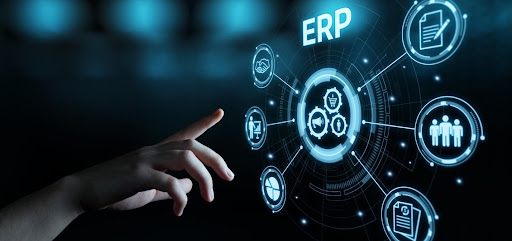Introduction
Enterprise Resource Planning (ERP) systems have become an integral part of modern businesses, facilitating streamlined operations, improved efficiency, and better decision-making. As technology continues to evolve rapidly, custom ERP solutions are also undergoing significant transformations. In this article, we will explore nine ERP technology trends that are expected to shape the landscape in 2023 and beyond.
1. Cloud-Based ERP Solutions
Cloud computing has revolutionised the way businesses manage their IT infrastructure, and ERP systems are no exception. Cloud-based ERP solutions offer numerous advantages, including scalability, flexibility, and cost-effectiveness.
In 2023 and beyond, we can expect a surge in the adoption of cloud-based ERP systems as organisations seek to leverage the benefits of easy access, real-time updates, and seamless integration with other cloud applications.
2. Artificial Intelligence (AI) and Machine Learning (ML) Integration
AI and ML technologies are being increasingly integrated into ERP systems to enhance automation, predictive analytics, and decision-making capabilities.
AI-powered chatbots and virtual assistants are becoming more sophisticated, enabling users to interact with the ERP system more intuitively and obtain real-time insights. ML algorithms are being utilised for demand forecasting, inventory optimization, and predictive maintenance, helping organisations make data-driven decisions.
3. Internet of Things (IoT) Integration
With the proliferation of IoT devices, ERP systems are incorporating IoT capabilities to capture, analyse, and act upon data from interconnected devices. IoT integration enables ERP systems to gather real-time information about equipment, supply chain processes, and customer behaviour. This data can be leveraged to optimise production, improve inventory management, and provide personalised customer experiences.
4. Enhanced Data Analytics and Reporting
Data is the lifeblood of ERP systems, and advanced analytics capabilities are becoming a crucial component of such software. ERP solutions are now equipped with robust reporting tools, data visualisation dashboards, and self-service analytics features. These advancements allow businesses to gain actionable insights from their ERP data, identify trends, spot opportunities, and address challenges proactively.
5. Mobile ERP Solutions
Mobile technology has transformed the way we work, and ERP systems are evolving to accommodate the mobile workforce. Mobile ERP solutions empower employees to access critical business information, perform tasks, and collaborate from anywhere, at any time. Whether it’s approving purchase orders, tracking inventory, or reviewing financial reports, employees can leverage mobile ERP apps to stay connected and productive on the go.
6. Blockchain Integration
Blockchain technology is finding its way into ERP systems, particularly in supply chain management and financial transactions. By leveraging the blockchain, ERP systems can provide enhanced transparency, traceability, and security in supply chain operations. Smart contracts and distributed ledger technology can streamline procurement, minimise fraud, and ensure the authenticity of transactions.
7. User-Friendly Interfaces
ERP systems are moving towards more intuitive and user-friendly interfaces to enhance user adoption and productivity. User experience (UX) design principles are being actively applied to create visually appealing and easy-to-navigate ERP interfaces. Personalization features are also becoming more prevalent, allowing users to customise their ERP dashboards and workflows according to their preferences and roles.
8. Integration with E-commerce Platforms
As e-commerce continues to flourish, ERP systems are integrating seamlessly with popular e-commerce platforms. This integration ensures efficient order processing, inventory management, and customer relationship management across online and offline channels. By connecting ERP systems with e-commerce platforms, businesses can achieve better inventory visibility, accurate demand forecasting, and improved customer satisfaction.
9. Enhanced Cybersecurity Measures
As cyber threats become more sophisticated, ERP systems are prioritising cybersecurity measures. Data encryption, multi-factor authentication, and role-based access controls are being reinforced to protect sensitive business information. ERP vendors are also focusing on regular security updates and patches to address vulnerabilities and ensure data privacy and compliance.
Conclusion
The ERP technology landscape is rapidly evolving, and organisations must stay abreast of the latest trends to maximise the potential of their ERP investments. Cloud-based solutions, AI/ML integrations, IoT capabilities, and advanced analytics are just a few of the trends shaping ERP systems in 2023 and beyond. By embracing these trends and leveraging modern ERP technologies, businesses can enhance their operations, drive growth, and gain a competitive edge in an increasingly digital and dynamic business environment.


